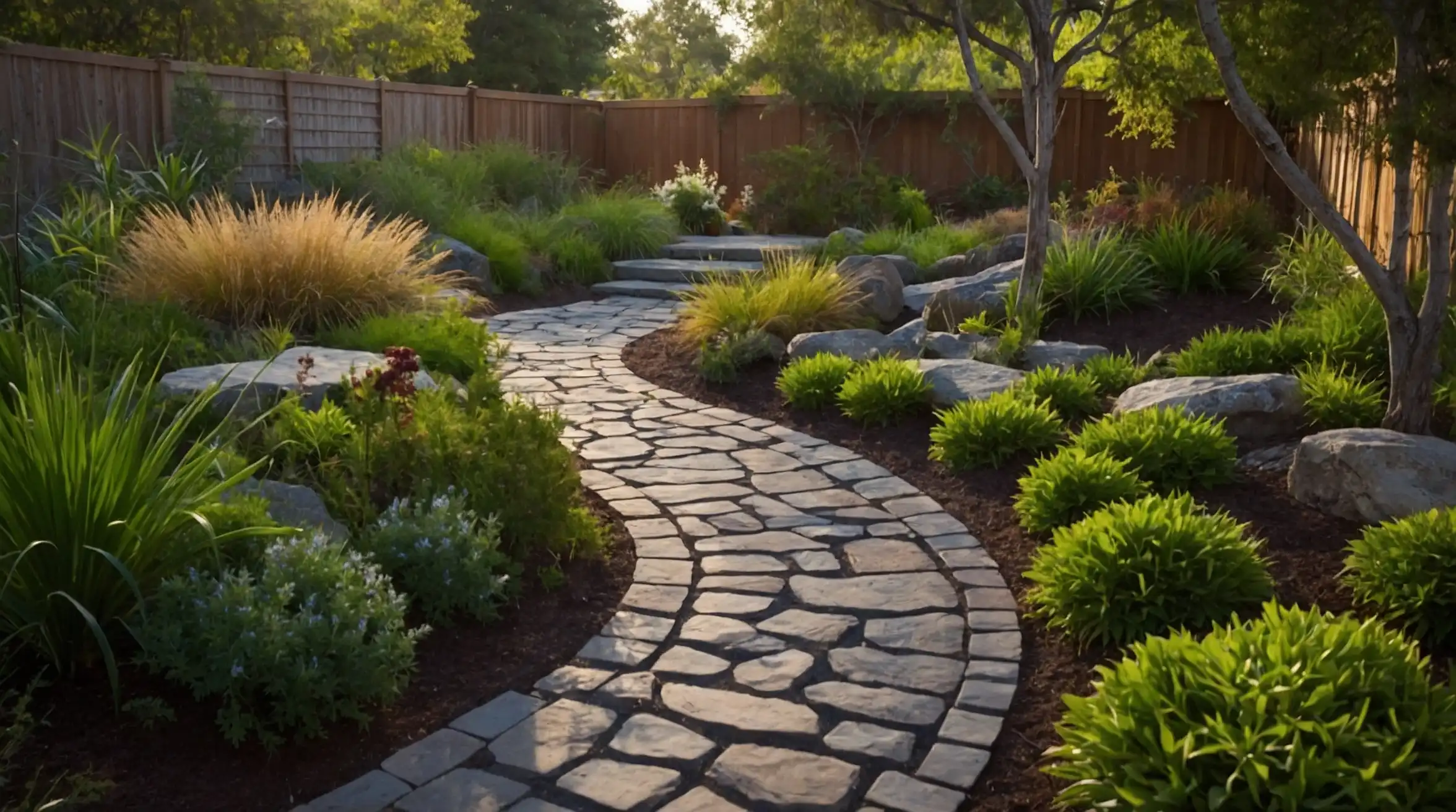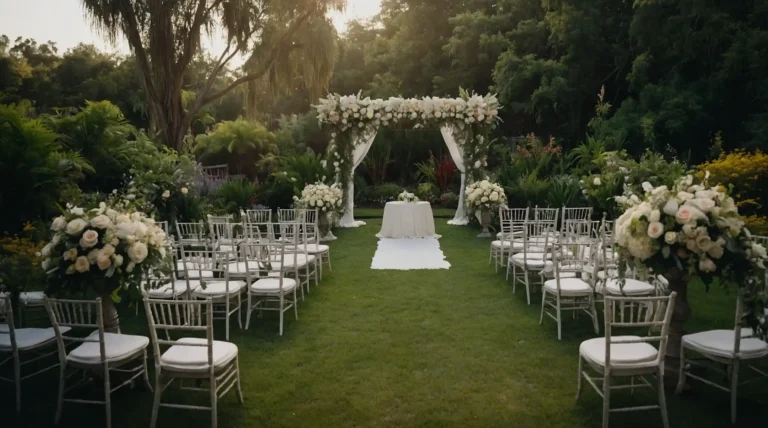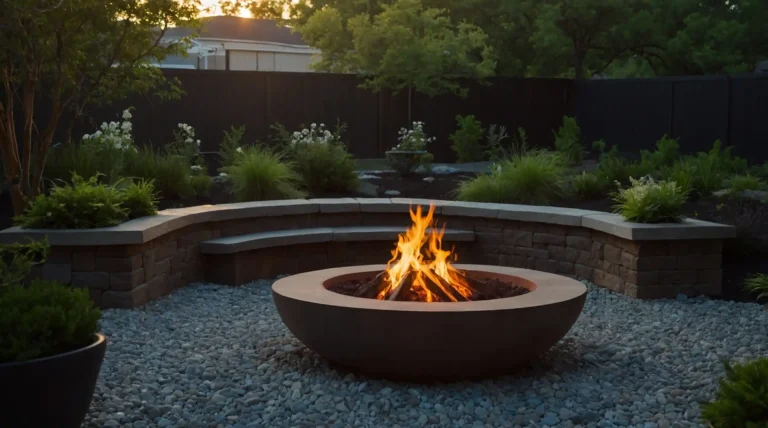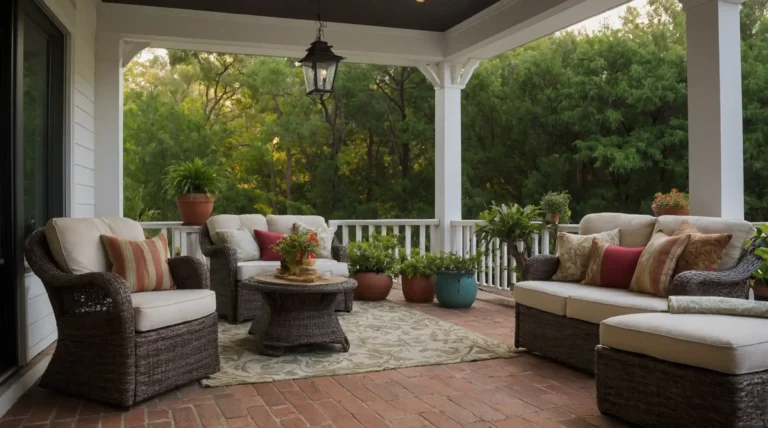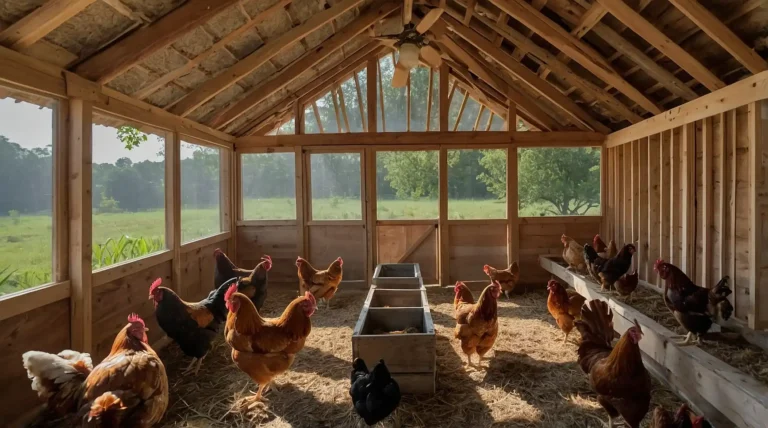27 Creative Pathway Ideas for Your Yard That Will Transform Your Landscape
Pathways do more than just guide you through your yard.
They create visual flow, define garden spaces, and add character to your entire landscape design.
You can transform ordinary walkways into stunning focal points with creative materials and thoughtful planning.
The right pathway complements your home’s architecture while serving practical needs.
These inspiring ideas work with any budget or skill level.
You’ll discover options ranging from simple weekend projects to elaborate installations that create lasting beauty.
1: Natural Stone Stepping Stones

You’ll create an organic, flowing pathway using irregularly shaped natural stones placed strategically through your landscape.
This timeless approach works beautifully in both formal and informal garden settings.
Space stones according to natural walking stride patterns.
This ensures comfortable passage while maintaining the organic, unforced appearance that makes natural stone so appealing.
Fill gaps with moss, groundcover, or decorative gravel.
These living or textural elements soften the hardscape while preventing weed growth between stones.
2: Herringbone Brick Pattern
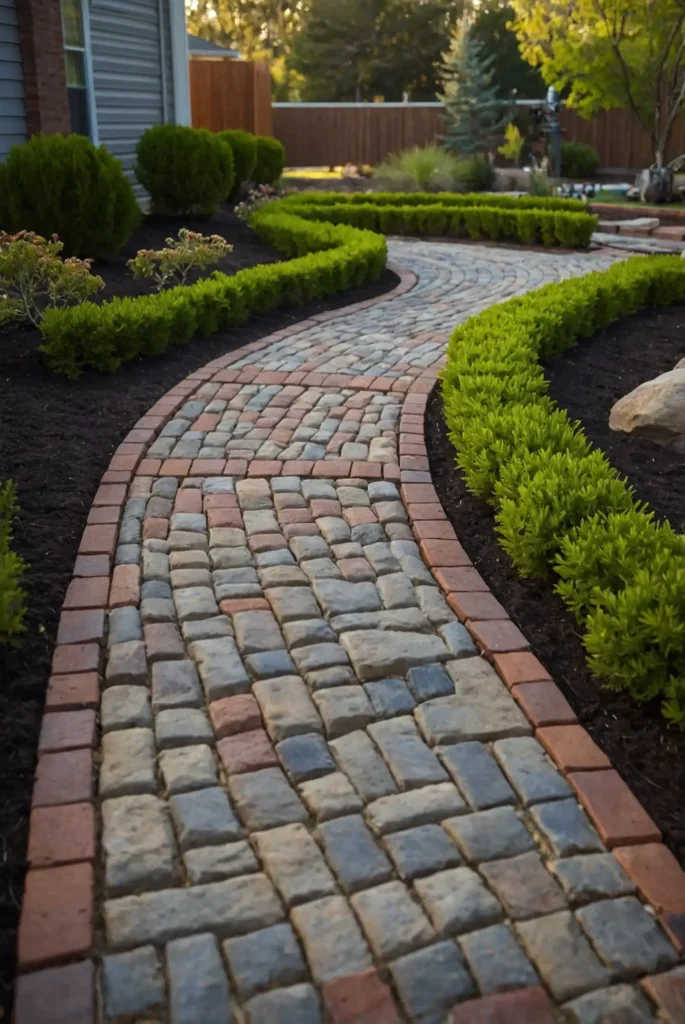
You can achieve classic elegance using traditional brick pavers arranged in herringbone patterns.
This sophisticated design adds timeless charm while providing excellent durability and traction.
Choose bricks that complement your home’s exterior colors.
Matching or contrasting tones create intentional design connections that enhance your property’s overall aesthetic appeal.
Install proper sand base and edge restraints for longevity. Professional installation techniques prevent shifting and maintain the precise pattern alignment over time.
3: Crushed Gravel Trails
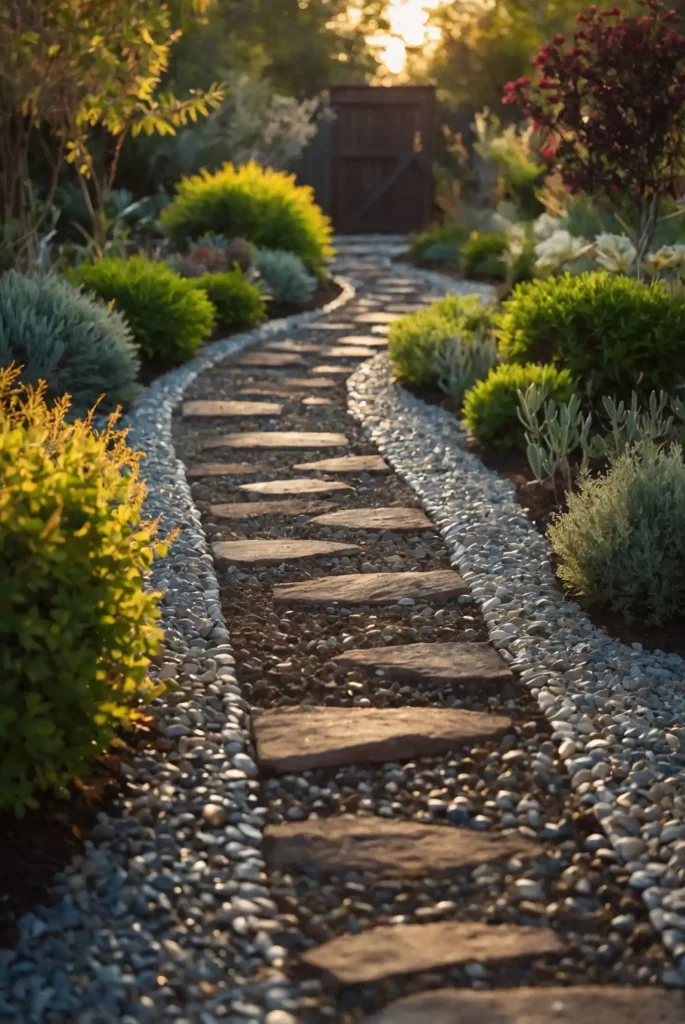
You’ll enjoy affordable, natural-looking pathways using various grades of crushed stone or decorative gravel.
These permeable surfaces drain well while providing comfortable walking.
Select gravel colors that harmonize with your landscape palette. Earth tones blend naturally while colored stones can create dramatic contrast or complement specific plantings.
Install landscape fabric underneath to prevent weed growth.
Proper preparation ensures low-maintenance pathways that remain attractive through multiple seasons.
4: Reclaimed Wood Boardwalk
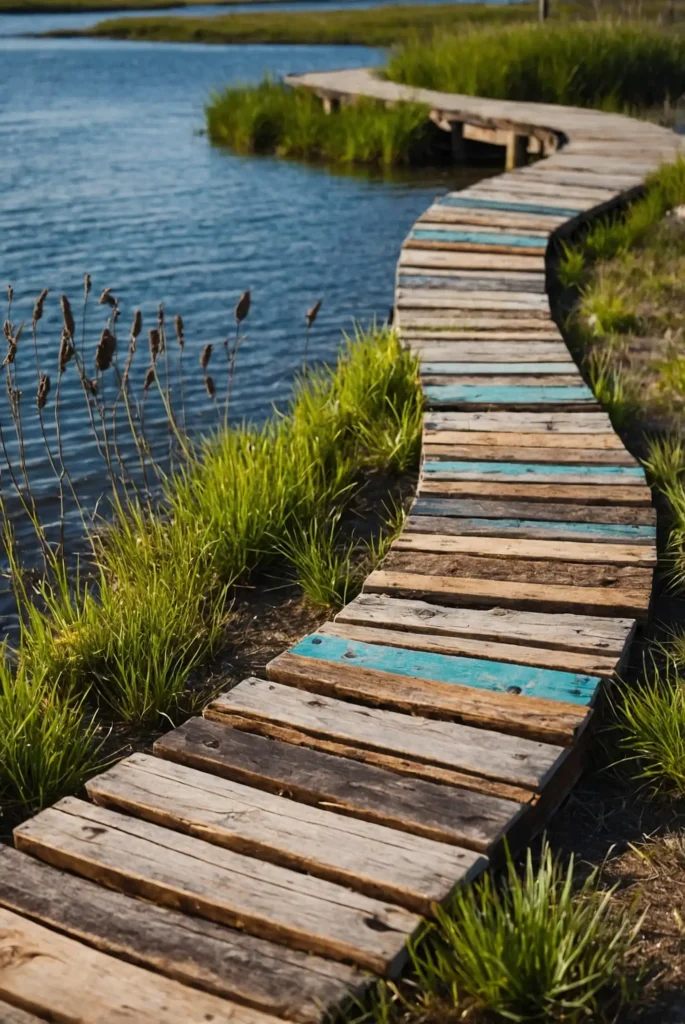
You can add rustic charm using reclaimed or weathered wood planks arranged as elevated boardwalk sections.
This approach works especially well in areas with drainage issues.
Treat wood with weather-resistant finishes for extended life.
Quality preservation products protect against rot and insect damage while maintaining natural appearance.
Elevate boardwalks slightly above ground level for proper drainage.
Good airflow underneath prevents moisture accumulation that leads to premature wood deterioration.
5: Decorative Concrete Pavers
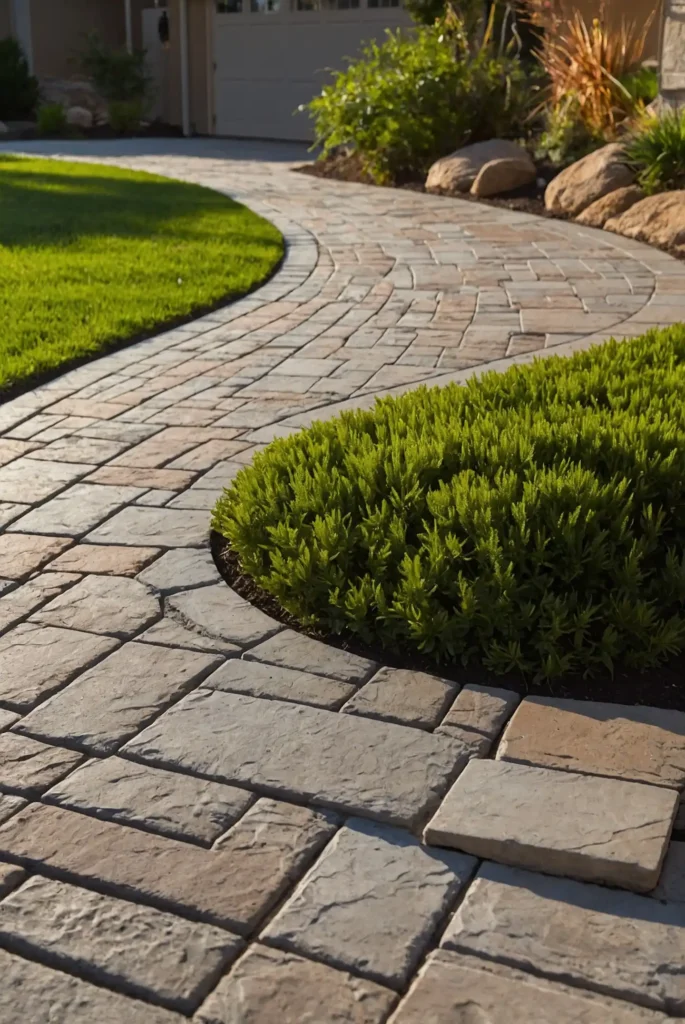
You’ll achieve modern sophistication using precast concrete pavers in geometric shapes and contemporary colors.
These versatile materials offer endless design possibilities and consistent appearance.
Arrange pavers in patterns that complement your home’s architectural style.
Grid layouts suit modern homes while curved arrangements work well with traditional designs.
Choose textured surfaces for better traction in wet conditions.
Safety considerations ensure pathways remain functional during rain or morning dew conditions.
6: Living Moss Pathways
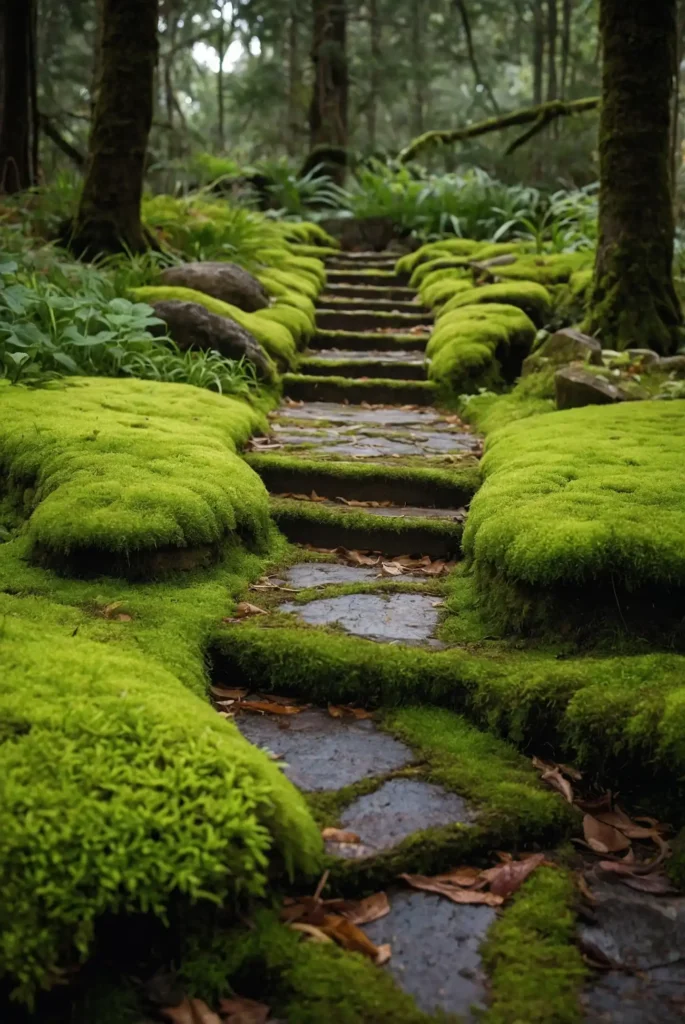
You can create magical, fairy-tale walkways using moss-covered stones or designated moss growing areas.
These living pathways thrive in shaded, moist garden locations.
Encourage moss growth by applying buttermilk or moss slurries to stone surfaces.
This natural approach establishes healthy moss colonies faster than waiting for natural colonization.
Maintain consistent moisture levels for healthy moss growth.
Regular misting during dry periods ensures lush, green coverage that enhances the enchanted garden atmosphere.
7: Mulch and Bark Chip Trails
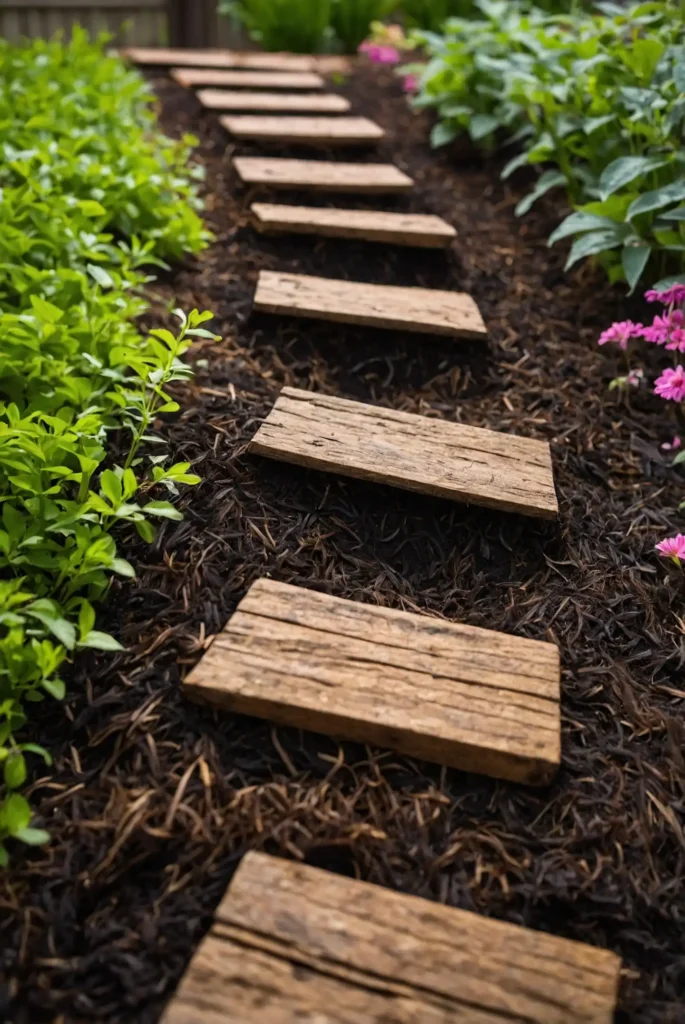
You’ll establish soft, natural pathways using organic mulch materials that complement planted areas seamlessly.
These affordable options blend invisibly with garden landscapes.
Choose mulch colors and textures that enhance surrounding plantings.
Dark mulches make colorful flowers pop while light-colored options brighten shaded pathway areas.
Refresh mulch annually to maintain appearance and depth.
Regular replenishment prevents compaction while ensuring proper drainage and weed suppression benefits.
8: Flagstone Irregular Pattern
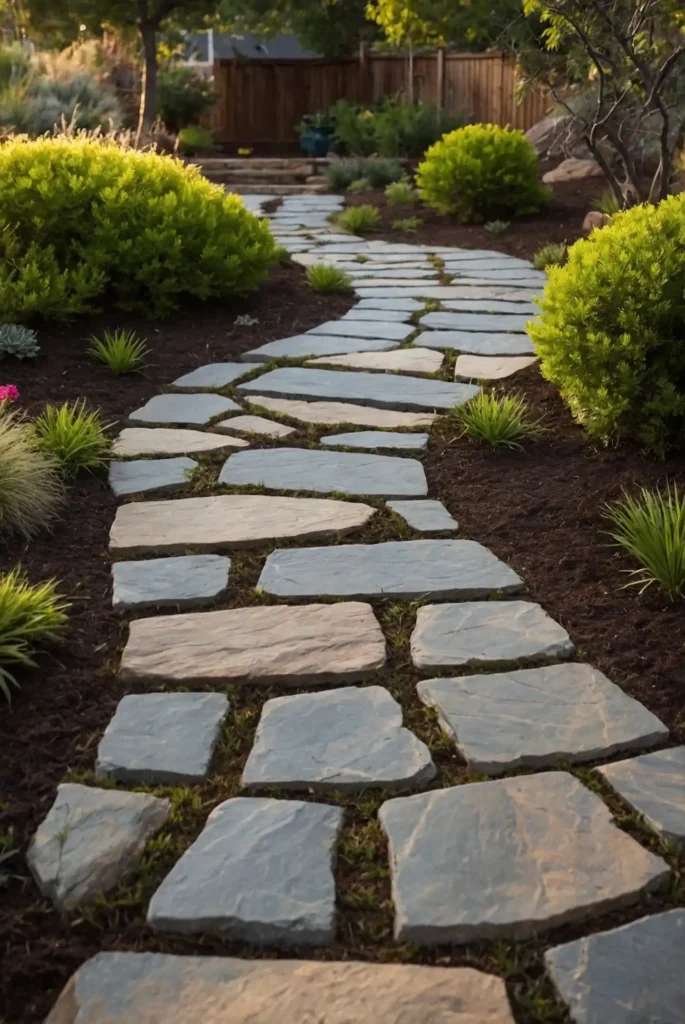
You can create sophisticated, natural-looking walkways using irregularly shaped flagstone pieces fitted together like puzzle pieces.
This artistic approach showcases stone’s natural beauty.
Select stones with complementary colors and textures for visual harmony.
Consistent thickness ensures level walking surfaces while varying shapes create organic appeal.
Point joints with sand or mortar depending on desired formality.
Sand joints allow flexible installation while mortar creates permanent, formal pathway appearances.
9: Cobblestone Vintage Appeal
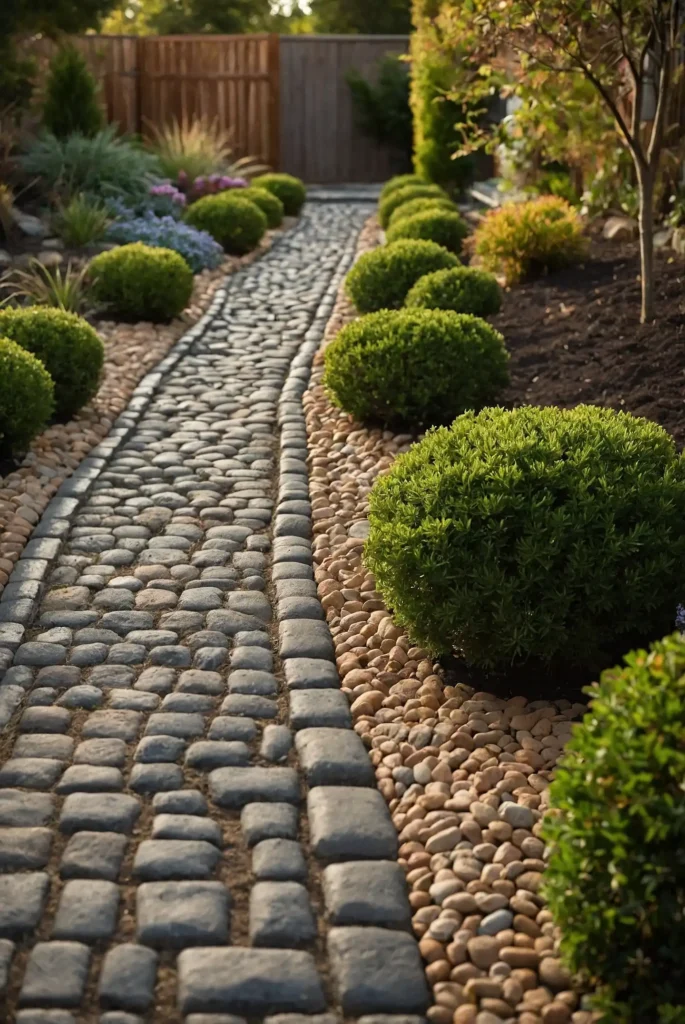
You’ll achieve Old World charm using authentic or manufactured cobblestones arranged in traditional patterns.
These durable materials provide centuries of reliable service.
Install cobblestones over properly prepared sand bases for stability.
Traditional installation methods ensure authentic appearance while providing modern drainage and durability.
Combine cobblestones with other materials for varied textures.
Brick borders or stone accents create visual interest while maintaining the historic character.
10: Crushed Shell Coastal Style
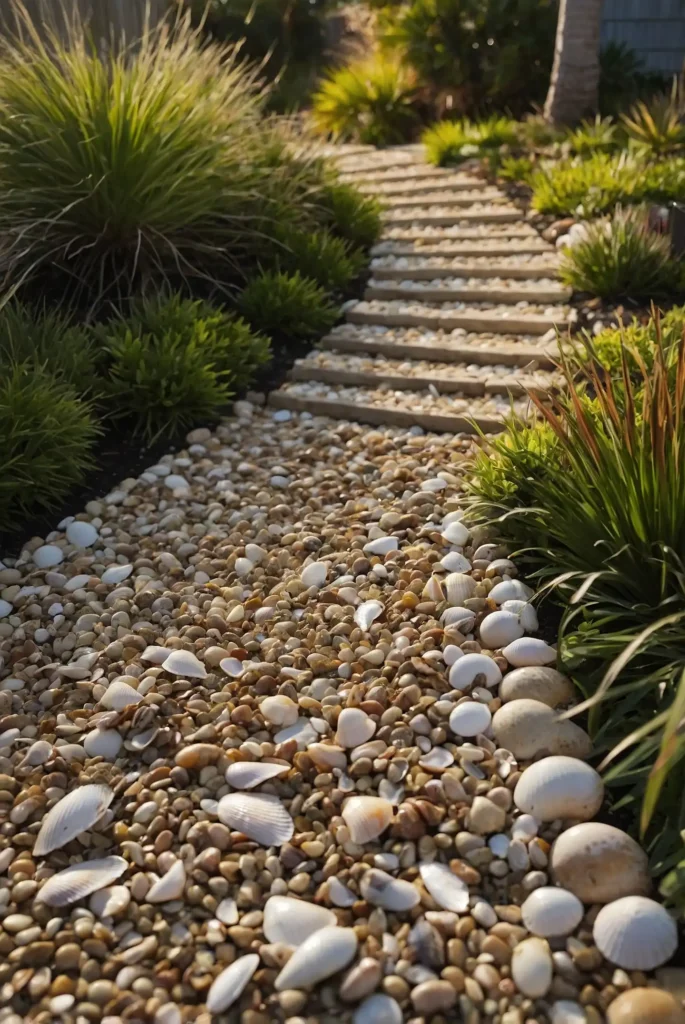
You can bring beachy vibes inland using crushed oyster shells or decorative shell materials for coastal-themed pathways.
These unique materials provide excellent drainage.
Source shells from reputable suppliers to ensure proper cleaning and sizing.
Quality shell materials resist compaction while maintaining attractive, consistent appearance.
Install edge restraints to prevent shell migration into planted areas.
Proper containment maintains clean pathway edges while protecting surrounding landscape elements.
11: LED-Integrated Lighting Design

You’ll enhance safety and beauty by incorporating LED strip lighting or embedded fixtures directly into pathway construction.
This integration provides seamless nighttime illumination.
Choose warm light colors for welcoming ambiance.
Soft lighting creates inviting pathways while avoiding harsh glare that disturbs natural evening atmosphere.
Install low-voltage systems for safety and efficiency.
Professional electrical installation ensures reliable operation while minimizing energy consumption and maintenance requirements.
12: Geometric Tile Patterns
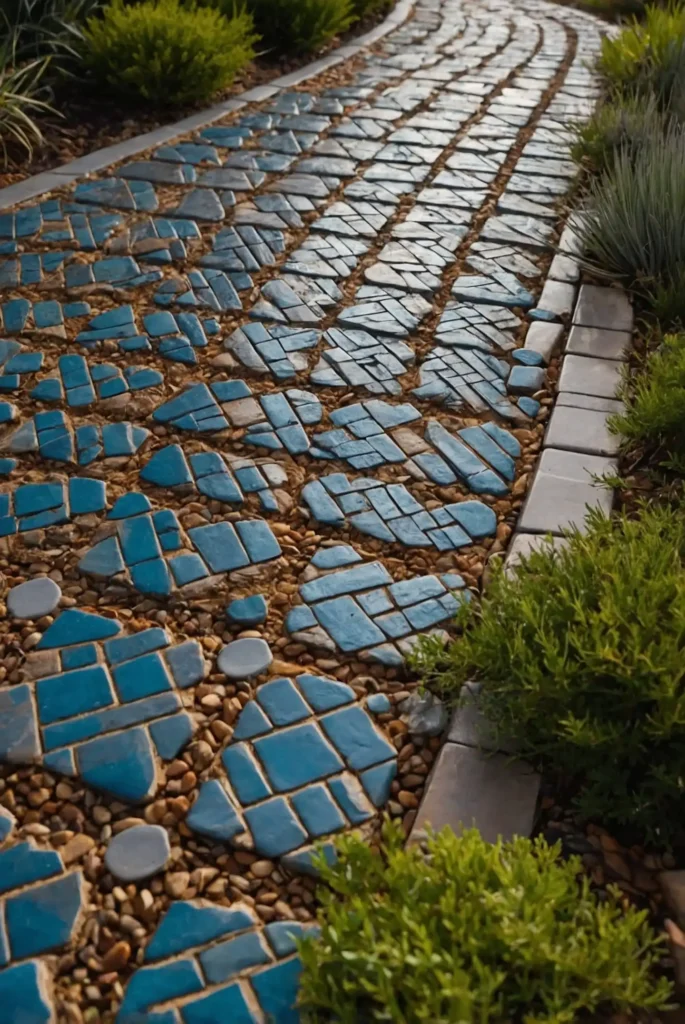
You can create bold, contemporary statements using large-format tiles arranged in geometric patterns.
These modern materials suit urban and contemporary landscape designs perfectly.
Select tiles rated for outdoor use and freeze-thaw resistance.
Quality materials maintain appearance and structural integrity through seasonal temperature variations.
Plan patterns carefully before installation begins.
Precise measurements and layout ensure professional results that enhance your property’s modern aesthetic appeal.
13: Curved Flowing Designs
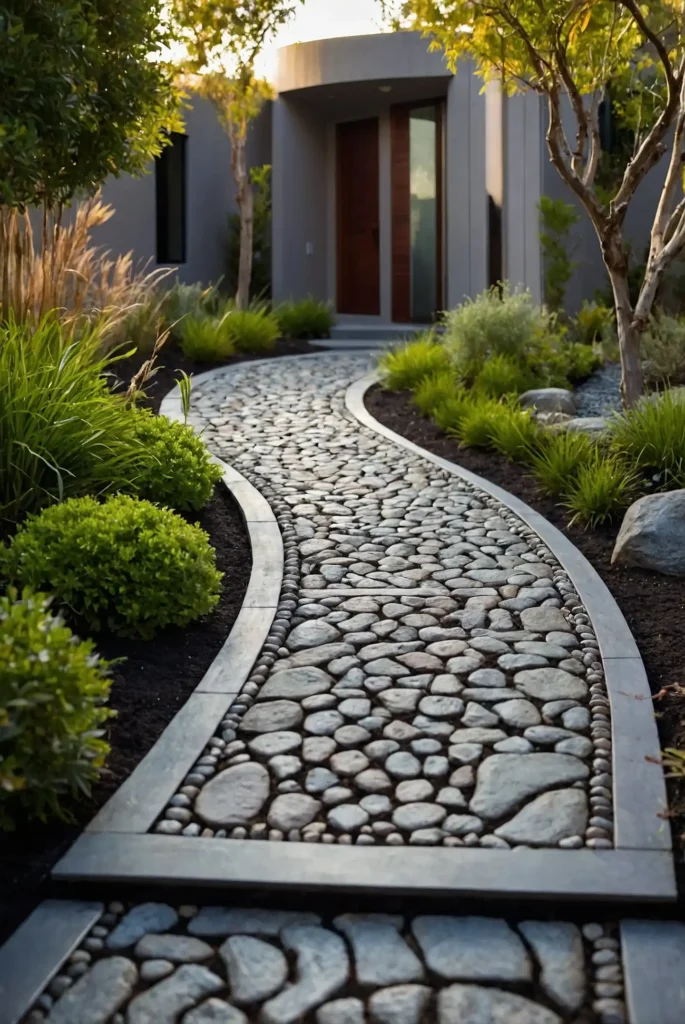
You’ll soften harsh landscape lines using pathways that curve gracefully through your yard following natural contours.
These organic shapes create more interesting visual journeys.
Plan curves that feel natural rather than arbitrary.
Thoughtful routing around existing features creates purposeful pathways that enhance rather than fight natural topography.
Use flexible materials that accommodate curved layouts easily. Smaller units like bricks or pavers adapt to curves better than large, rigid materials.
14: Raised Walkway Platforms

You can solve drainage issues while adding architectural interest using elevated pathway sections supported by posts or retaining structures.
These solutions work well in wet areas.
Design elevated sections with proper slope for water runoff.
Adequate drainage prevents water accumulation that can damage structural elements and create safety hazards.
Choose materials that coordinate with your home’s architecture. Consistent design elements ensure elevated pathways appear intentional rather than purely functional additions.
15: Sunken Garden Pathways
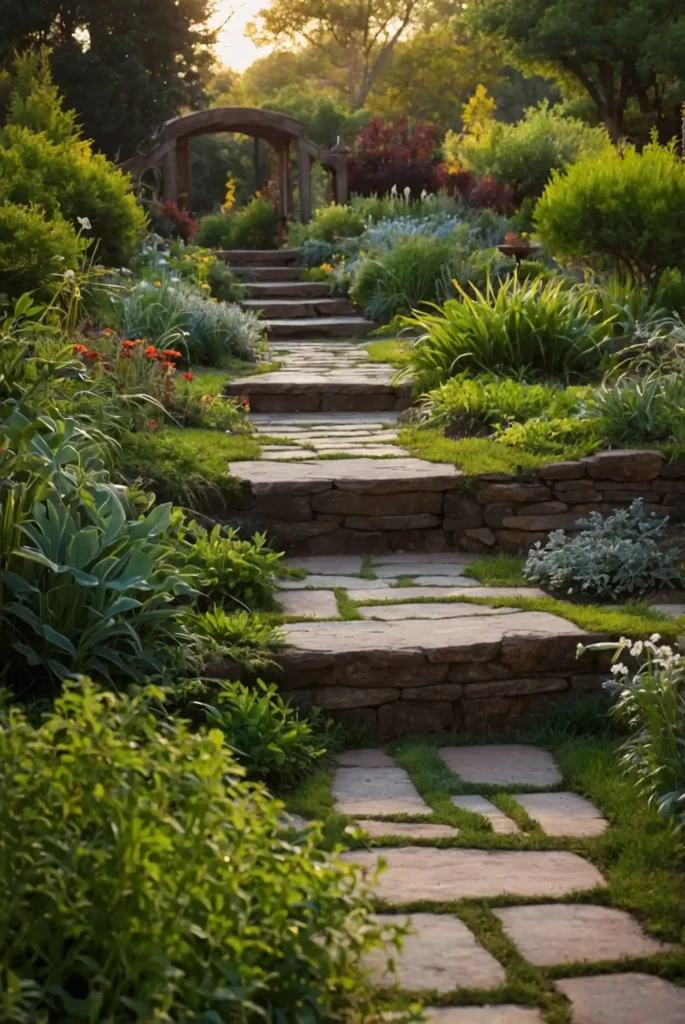
You’ll create intimate, enclosed feelings using pathways set below surrounding grade levels.
These design techniques make gardens feel larger while providing unique perspectives.
Install proper drainage in sunken areas to prevent water accumulation.
French drains or other systems ensure pathways remain functional during heavy rain periods.
Use retaining walls or planted slopes to define sunken pathway edges.
These transitions create smooth grade changes while preventing soil erosion.
16: Mixed Material Combinations

You can achieve unique, custom appearances by combining different pathway materials in creative ways.
Stone borders with gravel centers create attractive, affordable combinations.
Plan material transitions carefully for professional appearance. Clean lines between different materials ensure intentional design rather than random material changes.
Consider maintenance requirements when combining materials.
Compatible drainage and cleaning needs simplify long-term pathway care and preserve attractive appearance.
17: Permeable Paver Systems
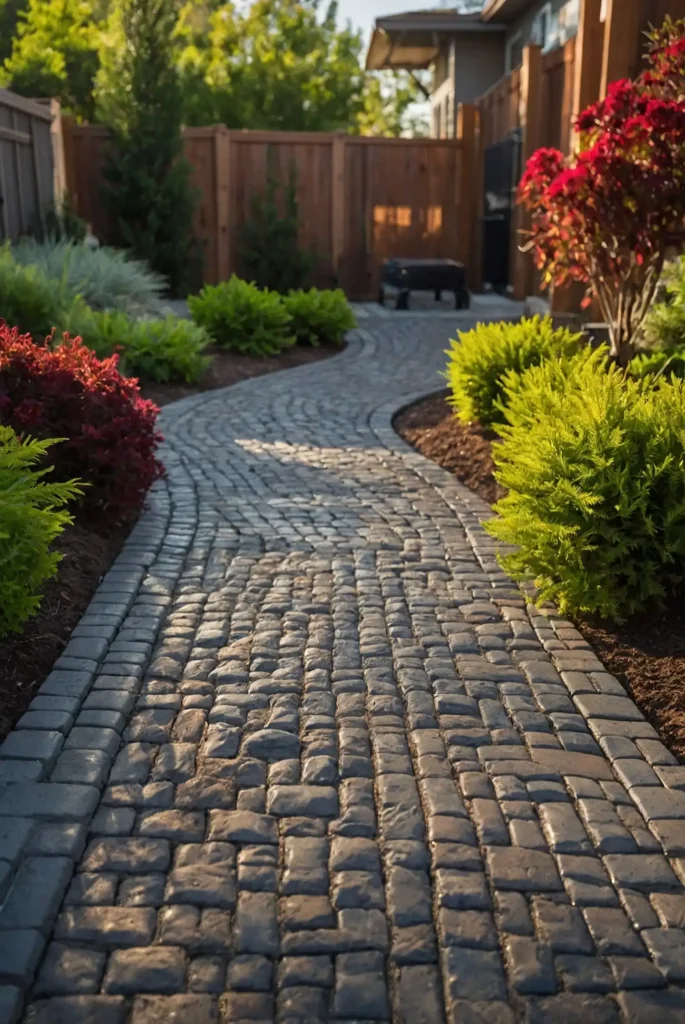
You’ll support environmental sustainability using permeable paving materials that allow rainwater infiltration while providing solid walking surfaces.
These eco-friendly options reduce runoff.
Choose systems appropriate for your climate and soil conditions.
Professional evaluation ensures proper installation and optimal performance for your specific site.
Maintain permeable surfaces regularly to preserve infiltration capacity.
Periodic cleaning prevents clogging that reduces the environmental benefits these systems provide.
18: Artistic Mosaic Inlays

You can transform ordinary pathways into artistic expressions using mosaic tile inlays or decorative patterns.
These creative elements showcase personal style and artistic interests.
Plan mosaic designs before installation to ensure proper material quantities.
Detailed drawings help visualize finished results and prevent costly design changes.
Use weather-resistant materials and proper adhesives for outdoor durability.
Quality installation ensures artistic elements withstand weather exposure while maintaining beauty.
19: Grass Pathway Strips
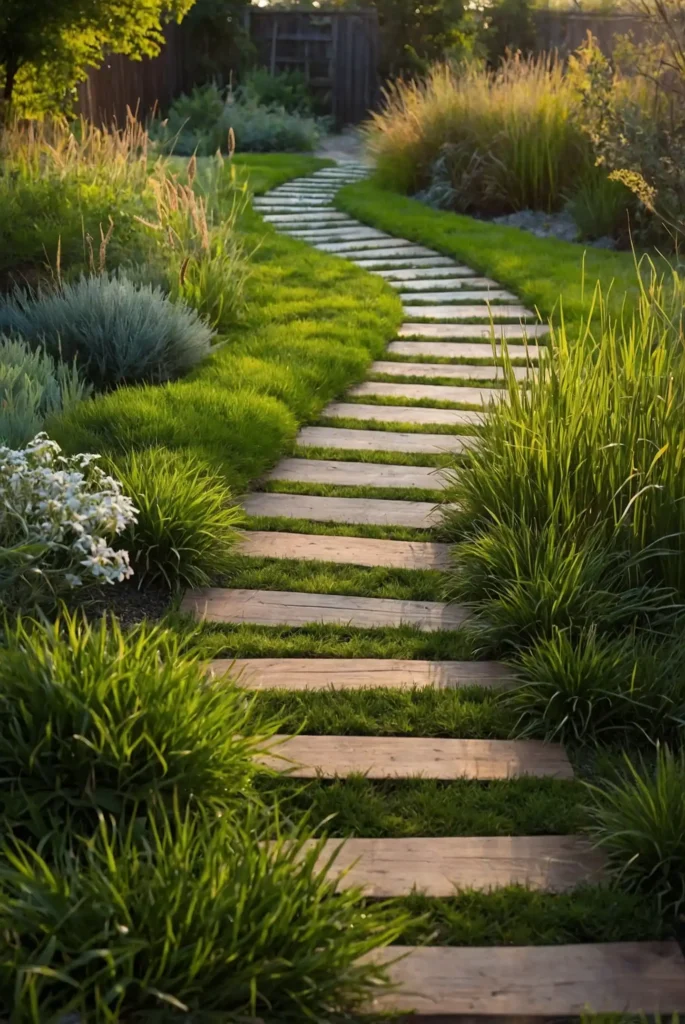
You’ll create soft, natural walkways using designated grass strips that guide movement through landscape areas.
These living pathways blend seamlessly with lawn areas.
Choose grass varieties suited to foot traffic and your climate.
Durable species withstand regular use while maintaining attractive appearance throughout growing seasons.
Install stepping stones at regular intervals for wet weather use.
These supplemental elements ensure pathways remain functional during muddy conditions.
20: Water Feature Integration
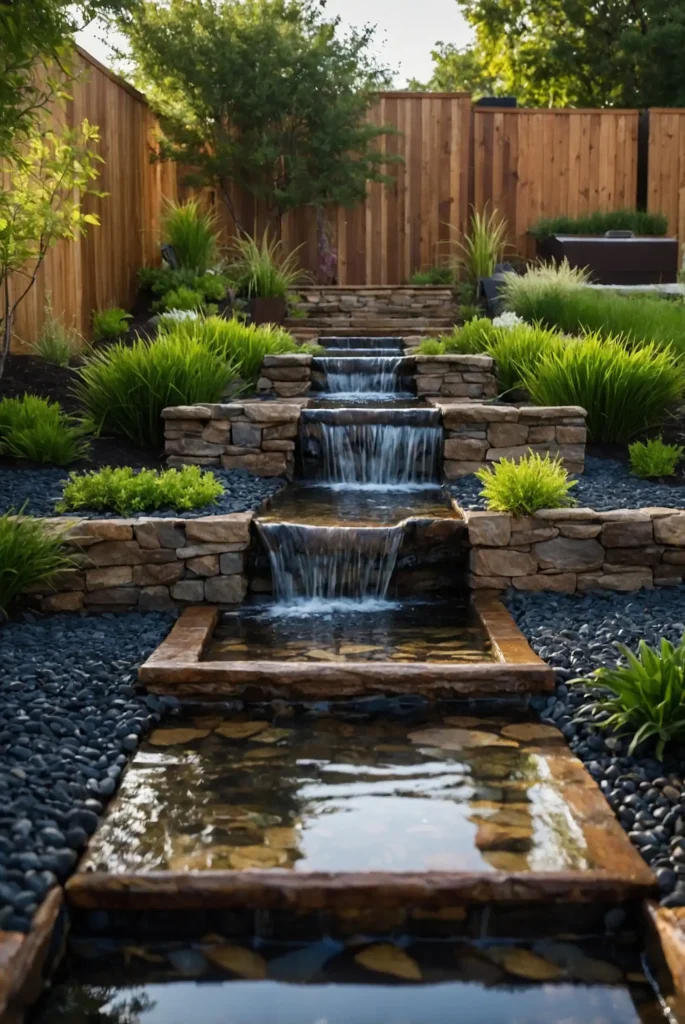
You can enhance pathway experiences by incorporating water elements like small streams or decorative channels alongside walkways.
These features add sound and visual interest.
Plan water features with proper circulation and filtration systems.
Quality mechanical systems ensure clean, healthy water that enhances rather than detracts from pathway beauty.
Position water elements for safety and accessibility.
Thoughtful placement provides beautiful views while maintaining safe passage for all pathway users.
21: Seasonal Planting Borders
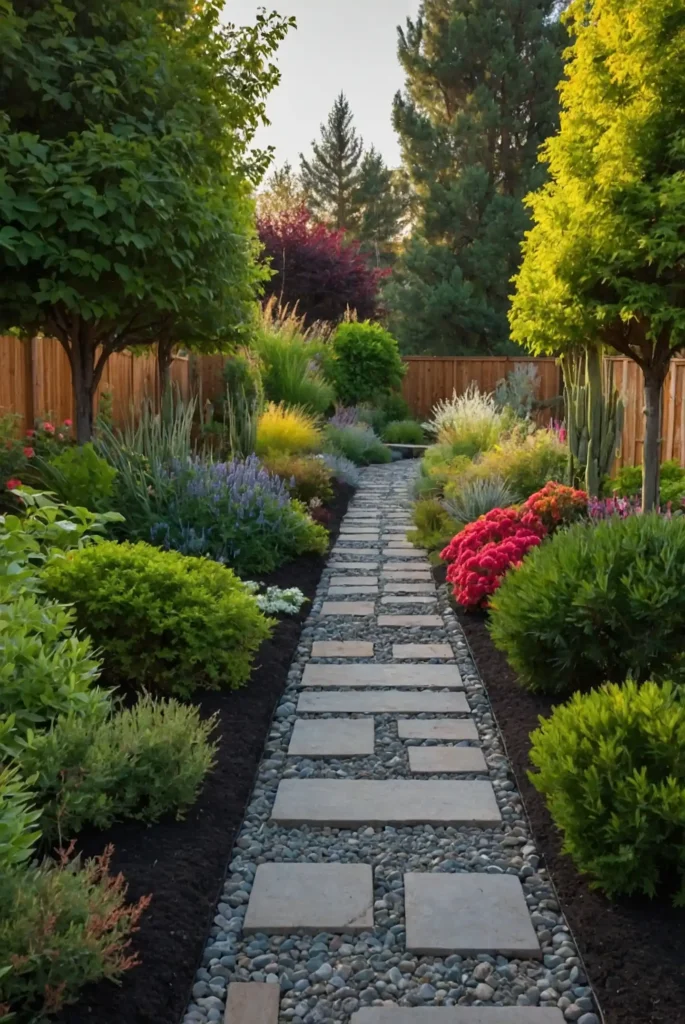
You’ll create dynamic pathway edges using seasonal flower borders that change appearance throughout the year.
These living elements provide constant visual interest.
Plan succession plantings for continuous bloom periods.
Strategic plant selection ensures attractive borders from spring through fall in most climate zones.
Install automatic irrigation for easy maintenance of border plantings.
Consistent watering ensures healthy plant growth while reducing daily maintenance requirements.
22: Industrial Modern Materials
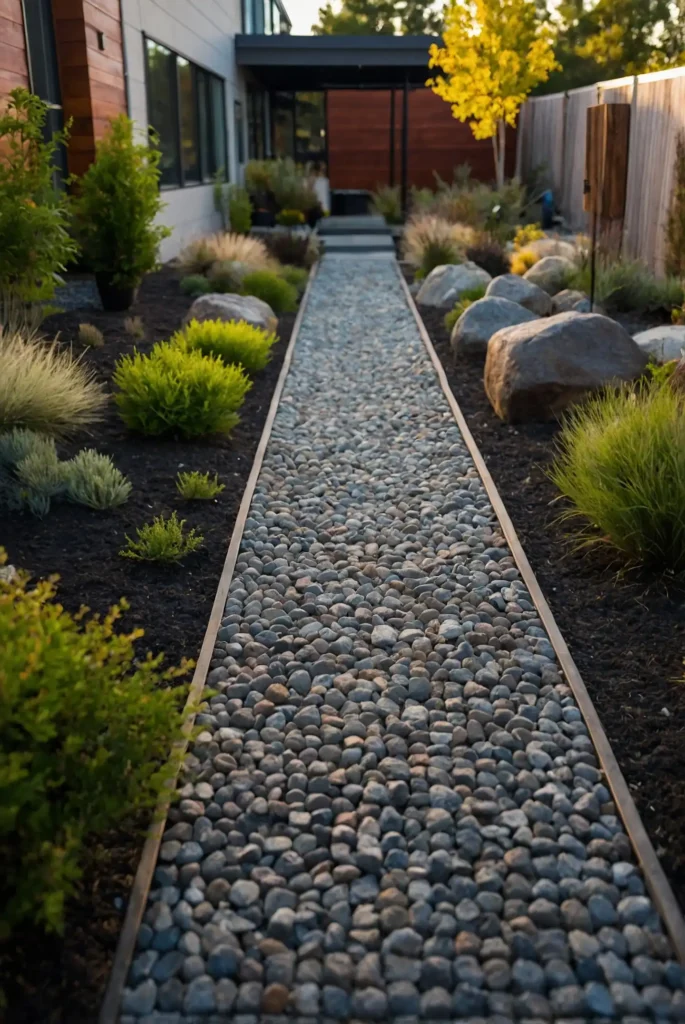
You can achieve contemporary urban aesthetics using industrial materials like steel plates, concrete slabs, or corten steel elements.
These modern options suit contemporary architecture.
Choose materials that develop attractive patina over time.
Quality metals and treated surfaces age gracefully while maintaining structural integrity and safety.
Plan installations with proper drainage and thermal expansion accommodation.
Professional engineering ensures industrial materials perform safely in residential applications.
23: Zen Garden Pathways
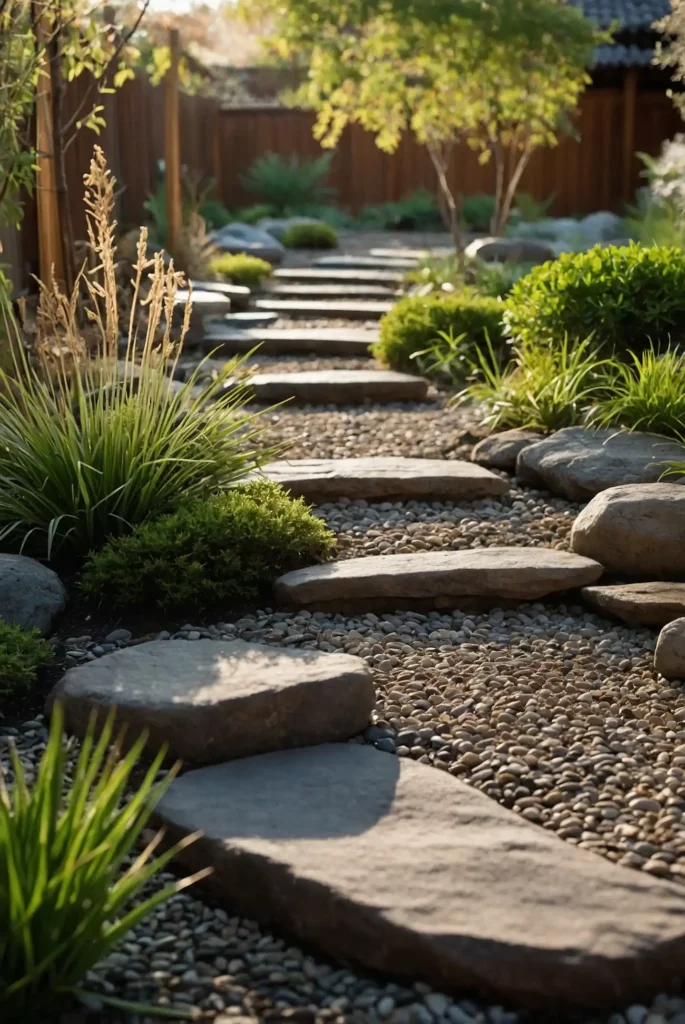
You’ll create meditative walking experiences using minimalist pathway designs inspired by Japanese garden principles.
These serene approaches emphasize simplicity and natural beauty.
Select materials with subtle colors and textures that promote calm contemplation.
Neutral tones and organic shapes support peaceful, meditative garden atmospheres.
Incorporate viewing areas or seating along pathways for rest and reflection.
These pause points enhance the meditative quality while providing comfortable contemplation spaces.
24: Edible Landscape Integration

You can combine beauty with function by designing pathways that incorporate edible plants and herb borders.
These productive landscapes provide fresh ingredients alongside navigation.
Choose edible plants that thrive in pathway edge conditions. Hardy herbs and compact vegetables tolerate foot traffic while providing convenient harvesting access.
Plan pathways wide enough for garden maintenance activities. Adequate space ensures comfortable harvesting and plant care without damaging pathway surfaces.
25: Vintage Reclaimed Materials

You’ll achieve unique character using salvaged materials like old bricks, antique stones, or reclaimed timber.
These historic elements add stories and authenticity to new landscapes.
Source reclaimed materials from reputable dealers who ensure structural soundness.
Quality salvaged materials provide beauty and durability when properly selected and installed.
Clean and prepare reclaimed materials properly before installation.
Appropriate preparation ensures recycled elements perform reliably while maintaining their historic charm.
26: Spiral and Labyrinth Designs
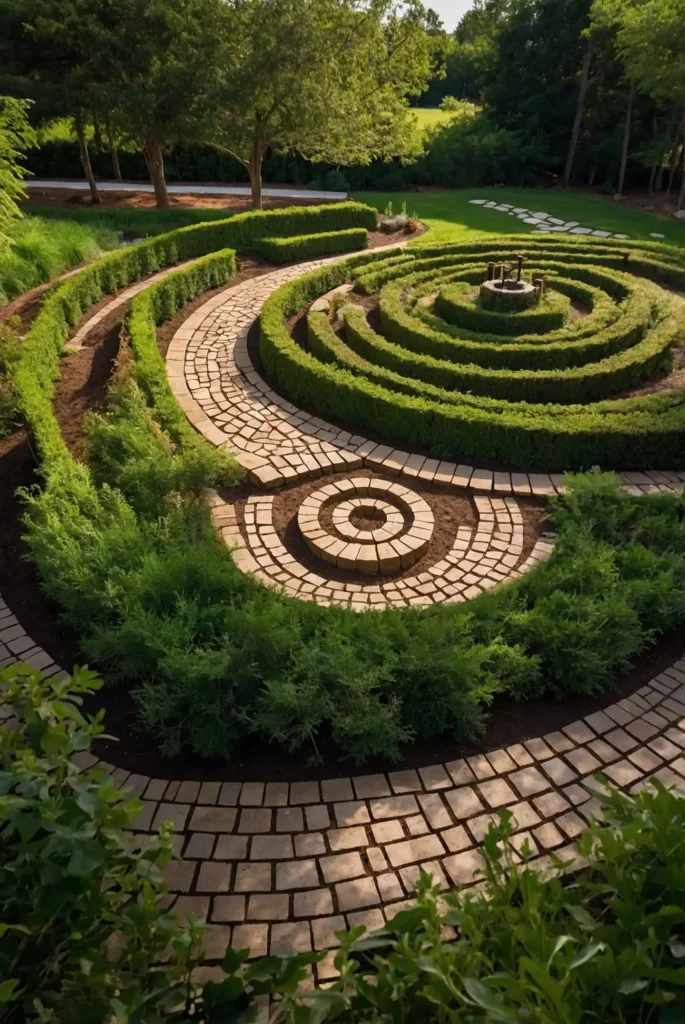
You can create contemplative journey experiences using spiral or labyrinth pathway patterns.
These meditative designs encourage slow, thoughtful movement through landscape spaces.
Plan spiral pathways with appropriate scale for your yard size. Proper proportions ensure the design feels intentional rather than cramped in available space.
Use consistent materials throughout spiral designs for visual unity.
Continuous surfaces emphasize the flowing, meditative quality of these special pathway configurations.
27: Smart Technology Integration

You’ll enhance pathway functionality using smart technology like motion-activated lighting, heated surfaces, or app-controlled features.
These innovations provide convenience and safety.
Choose technology systems with reliable outdoor performance ratings.
Quality smart devices withstand weather exposure while providing consistent, convenient operation.
Plan technology installations with professional electrical support for safety and code compliance.
Proper installation ensures smart features operate reliably while maintaining safety standards.
Conclusion
These creative pathway ideas will transform your yard into a beautifully connected landscape that guides movement while showcasing your personal style perfectly.

